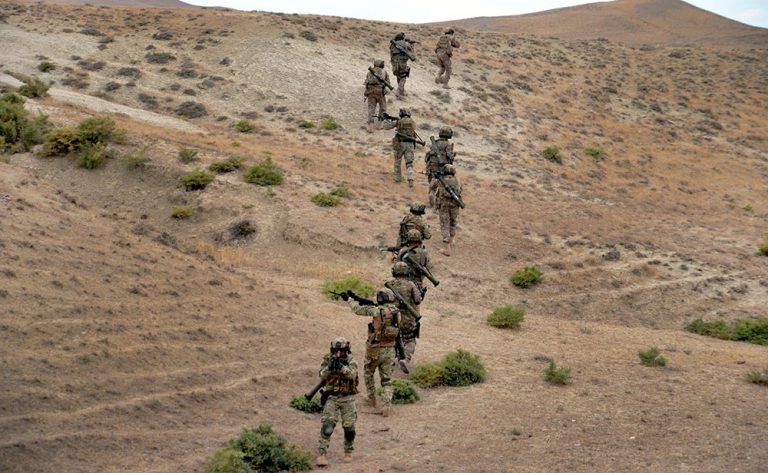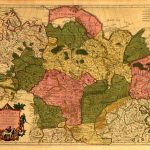On September 27th, the 30-year conflict in Karabakh was awakened. Heavy bombardments between the Armenian and Azerbaijani forces continued as the two warring sides refused to hear repeated appeals from various international leaders. On October 10th, after a Russian mediation, the ceasefire entered into force so as to be able to carry out an exchange of prisoners, but soon afterwards the allegations of violation between the parties were triggered. Let’s summarize the situation: Nagorno Karabakh is a mountainous region, a small enclave of ethnic Armenian population within Azerbaijan called Nagorno-Karabakh, but politically within the State of Azerbaijan. The first episodes of violence began in the early 80’s when the Soviet Union still existed, but the real massacres instead began immediately after the collapse of the USSR in 1992. The Armenians of Nagorno Karabakh asked to join Armenia territorially. The war of those years ended in 1994 with a ceasefire, the military victory of the Armenians and about 30,000 dead. Since then, Nagorno-Karabakh has been under the control of the Armenian ethnic forces. More than a million people have been forced to flee their homes. Nearly 600,000 Azeris have moved to Azerbaijan. The small region that has declared itself independent and has its own government, but which is not recognized even by Armenia, has a population of 150,000 people.
Since the 1994 ceasefire, decades of negotiations – mediated by three co-chairs of the Minsk Group of the Organization for Security and Cooperation in Europe (OSCE) representing France, Russia and the United States – have failed to resolve the conflict. And no concrete results have been achieved. Guilt dies orphan. Both sides accuse and both sides are at fault. Armenia has a vested interest in maintaining the status quo since the military victory was clearly its own. Azerbaijan certainly cannot accept this, but it has never wanted to compromise. His maximum attempt was in 2016, in a 4-day war, where the aim was clearly to get Armenia to sit at the negotiating table. The United States organized peace negotiations in 2001, but did not conclude an agreement. Russian President Medvedev tried to reach a compromise by organizing a meeting in Kazan in 2011, but again without success. Putin hosted a meeting in St. Petersburg in 2016, but there was no concrete step towards a real deal. The positions of the parties have always been one of strong confrontation and hatred.
What is the situation today? The international community, from the United Nations Security Council to the co-chairs of the OSCE group in Minsk, calls for an end to the clashes and resuming negotiations, but without a real concrete commitment, neither diplomatic nor political. The United States is almost absent and the European Union has never played a relevant role. At this point, new dynamics have created new situations, raising the level of military action. The discovery of gas and oil fields in the Caspian Sea has increased not only the flow of money available to Baku, but also the balance of power between the parties, making Azerbaijan richer, therefore militarily and politically stronger. Russia supports Armenia which has always been linked by the Collective Security Treaty (CSTO), which brings together Armenia, Belarus, Kazakhstan, Kyrgyzstan, Russia and Tajikistan; but it is certainly cautious in coming out strongly against Baku given its excellent commercial relations. He tries to mediate between the parties, but in reality he has never really had the real interest in forcing a compromise. Turkey’s explicit support for Azerbaijan’s military intervention has reversed the situation, showing that even in the Caucasus the opposing strong powers are, as in the case of Libya and Syria, Turkey and Russia. Turkey, a member of NATO, supports the Azeris by all means. On the other hand, despite the calls for a ceasefire and an agreement, the substantial European and American indifference only feed the egos and ambitions of the two powers. Again as in the war scenarios in Syria and Libya, Turkey has sent its Syrian mercenaries to Azerbaijan and Russia the Wagner mercenaries. With the current military action, Baku’s objective is to change the facts on the battle field, thus regaining part of the claimed areas. It is impossible to verify what the situation is on the ground. Access to the media is almost impossible. Heavy confrontations – including the use of armed drones, tanks, helicopters, and multiple rocket systems – have clearly demonstrated that the balance of power from a military perspective has changed. Russia is among the major arms suppliers to both Azerbaijan and Armenia. And according to the CSTO it also has a military base in Armenia. According to the Stockholm International Peace Research Institute (SIPRI), a leading conflict and arms think tank, Israel provided Azerbaijan with approximately $ 825 million worth of arms between 2006 and 2019. A major energy producer, Azerbaijan exports oil into Israel and imports weapons and military equipment and it can use its own bases in Azerbaijan, though not to conduct air strikes against Iran.

Read also: Warning: Moscow is trying to religiolize the Nagorno-Karabakh conflict

Read also: Nagorno-Karabakh conflict as an opportunity for the Russian Empire’s revival
The violence risks reshaping the geography of alliances in the region. Alongside Turkey and Azerbaijan, as we have already seen, we find Israel, which alarms Iran. In fact, Rohani immediately expressed his concerns at the escalation of violence. On the one hand, Iran fears Israel’s proximity to its bases in Azerbaijan, the arrival of foreign fighters from other conflict scenarios, but it also fears its own internal balance: 30% of the Iranian population belongs to the Azerbaijani minority. And that is why the Islamic republic supplies both Baku and Yerevan with weapons. Russia has the same dilemmas: it cannot loose ground in Azerbaijan, but it cannot appear passive towards Armenia. Perhaps this is the reason of Moscow’s declaration that according to the CSTO it would intervene only under the obligations of the Treaty and that these obligations do not cover the unrecognized republic of Nagorno-Karabakh.
In a violent conflict like this, no one will stop easily, but then Russia, Turkey and Iran will step in, to freeze everything again. A strong destabilization does not interest anyone, and freezing it means always remaining necessary actors. So clearly a frozen conflict is not a closed conflict.




